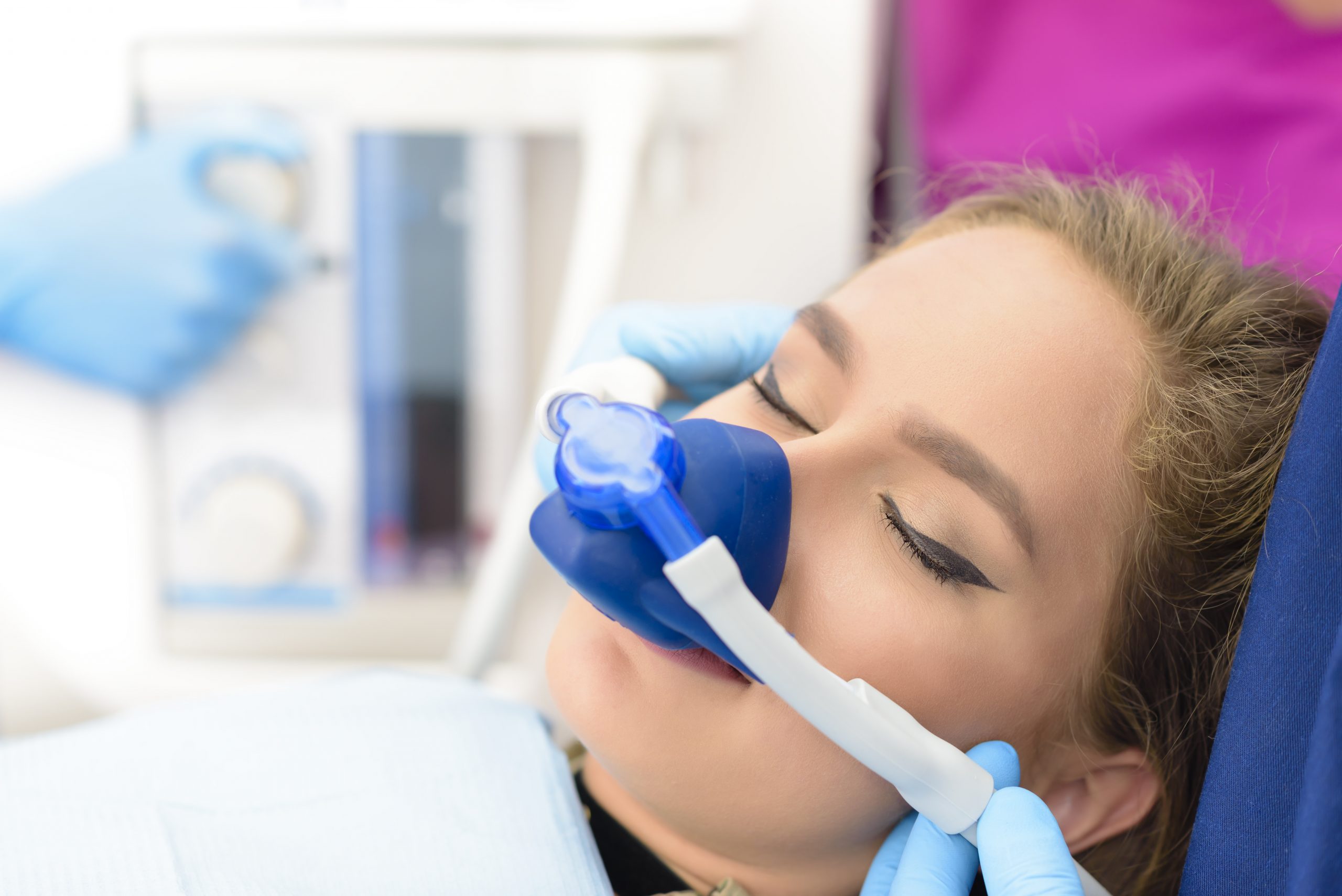You may have heard the term laughing gas being used regarding dental procedures. It’s formal name, nitrous oxide, is an effective and useful sedation tool used for certain dental procedures.
Nitrous oxide is typically used to help patients who may experience fear and anxiety during lengthy and / or stressful procedures, such as fillings, root canals, and extractions.
What exactly is nitrous oxide? It’s chemical name is N20, and it is similar to the configuration of water, as there are two nitrogen atoms bonded to an oxygen atom. Nitrous oxide is a gas. Your dentist utilizes a combination of nitrous oxide along with pure oxygen, which, when administered, produces a calming effect. The mixture can be varied if a stronger sedation effect is needed.
How exactly does nitrous oxide work? Laughing gas works in the body by blocking chemical substances called neurotransmitters. the proteins in the cells in your body transmit substances throughout the body quickly. An example of this would be how neurotransmitters react to pain in a situation, such as touching a hot stove and pulling away due to reflexes from the burning sensation. Nitrous oxide is able to inhibit some neurotransmitters while releasing others.
Once the patient breathes in the gas, it reaches the brain in about 20 seconds. Roughly two or three minutes later, the nitrous oxide starts to block pain receptors in the nervous system.
The gas is administered through a plastic fitting that goes over the patients nose. On that fitting, there are generally tubes on either side. While the gas is sedative, the patient remains awake throughout the procedure. The patient will be advised to breathe in through the nose and out of the mouth.
There are several ways that nitrous oxide effects you. It blocks the neurotransmitters that cause fear and anxiety. It also causes a release of norepinephrine, which helps to inhibit pain signals. Lastly, it increases the patient’s dopamine levels, causing a feeling of euphoria. During this, many patients report feeling lightheaded, having tingling in the arms and legs, sleepiness, warmth and euphoria. Through this, you will still be coherent, aware of what’s going on, and able to follow the dentist instructions. All of these effects are only temporary, and will end after the dentist discontinues the administering of the gas. The patient will still be able to continue on with their day with no after effects.
It is perfectly normal to have questions about what is going to be administered if you are a patient, and doing your due diligence on nitrous oxide will help to give you a better understanding of what the gas is and how it functions. Your dentist and the team understand that patients may be looking for answers, and they are more than happy to give the patient more in-depth information.
Nitrous oxide is a long standing staple in dental sedation, with a track record of being proven to be safe and effective. Of course, each patient and case is different, and your dentist will be able to determine if nitrous oxide is the right choice for you.







